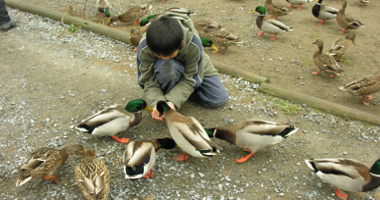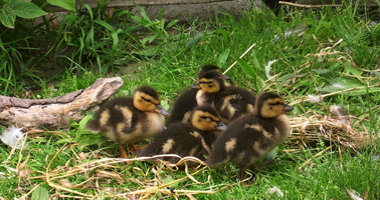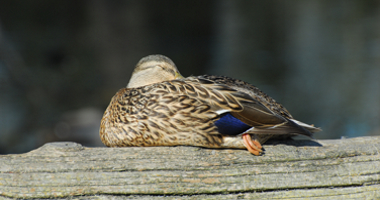Mallards

When people think of ducks, most think of Mallards, with the male's glossy green head, and the female so nicely camouflaged with her gold and brown grass colouring. Mallards are the most common duck species in the Sanctuary. In fact, they are the most abundant duck in North America, and around the world. Some scientists estimate that there at least 30 million Mallards globally.
Mallards are in their prime plumage in the fall when they migrate into the area from far-reaching nesting areas of the central interior of BC, Alaska, Alberta or even further way. We sometimes have as many as 16,000 Mallards suddenly appear in the Sanctuary's ponds in October, with an equal number out on the intertidal marshes and thousands more out in the surrounding farmland. Our Sanctuary and the Fraser River delta serve as the wintering grounds for these and many other waterfowl species. Most spend their summers elsewhere, something we have learned from the reports about the research bands on some of their legs.
Mallards start to form pair bonds almost right away in the fall, and over the winter and spring, there is a lot of courtship behavior. Most have left for their nesting areas by April. People notice this drop in numbers almost immediately, as there is no longer have a flock of 500 Mallards greeting cars in the parking lot.
The few hundred that remain here for the summer begin nesting as early as March, with broods of ducklings appearing from mid-April to the end of June. They make their nests on the ground, manipulating some of the late winter grass stems and ground plants into a shallow cushion for the eggs, and building up an insulating cover of down feathers pulled from their bodies. Mallard hens start to incubate once they have laid between a clutch of between 6 and 12 eggs. Incubation requires the bird to sit on the nest for most of a month to keep the eggs warm. We ask visitors to stay on trails at all times, but particularly in March and April to avoid inadvertently trampling a nest hidden in the grass cover, as some are less than a meter from the trail.



























